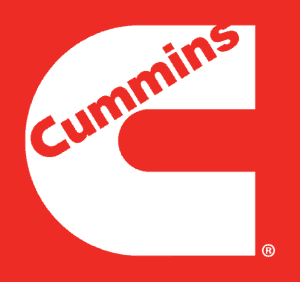The Off Grid Electrical System, Buyer Beware Part 3 – in part 1 we covered the slide out rebuild caused by water ingress, and part 2 we then repaired the cause of the water ingress. With all these problems in mind, this would have been the time to reject the sale, this did not happen.
The customer has now spent an extortionate amount of money correcting this major fault that I am convinced that the previous owner was aware of. On the other hand (forgetting about the cost), the motorhome is better now than when it was originally built.
We now get to the work that we should have been doing originally, which is the off-grid system. This required a lot of thought and planning before we could begin the task.
The first stage was to listen to the customer and then ask significant questions until you are satisfied that you have every bit of relevant information that is required.
This system needed to be capable of running a flight simulator which we would have to fit towards the end of the project. The bedroom air conditioning needed to work off the batteries, as did the flight simulator. After this, we were asked to remove the gas hob and replace it with an induction hob. The oven was then to be removed and replaced with a dishwasher. Next was the microwave, this was to be replaced with a 220-volt model.
So far, LAS Motorhomes have resisted the fitting of lithium batteries when customers have previously requested them, usually because after talking to them and finding out their needs, they do not require them. Forget the sales hype, lithium batteries are only applicable when:
- You need to save weight.
- You need to have a reason to change them quickly.
It soon became apparent whilst talking to customers that the weight was not a problem, but recharging the batteries would be if you are running an induction hob (in this case 3200w) and are going to be using a microwave or an air fryer at the same time. This being the case we must factor in that customer’s power requirements of about 6 kw which is 24 amps. Most camp sites have a 10 amp hook up facility and if you are extremely fortunate you might be lucky and get a 16 amp hook up, this would be 8 amps short of your requirements.
To re-cap we have a motorhome that will have a flight simulator which consumes so I am informed 800 kw, so let us say belt and braces 1 kw. The rear air conditioning 0f 4 amp (1kw) is needed to run off the batteries. We are now running at 8 kw. This 8 kw is unlikely to be running for long as most of its power usage comes from the cooking process. The flight simulator would be required to run for 8 hours. The input power to the motorhome as I stated before could be 10 or could be 16, this is not enough.
This motorhome has a 7.5 kw generator running at 120 volts and because it has an inverter generator you cannot change it over to produce 220 volts. The answer to this problem is to put an auto wound transformer into the circuit to increase the generator output voltage. We had this made specially by our regular supplier at an efficiency of 98.6% as we needed all the amps we could get.
By now with changing the air conditioning units we were nearly using all 220 volts except for the electric/gas water heater. The element was replaced with a 220 volt one and the fridge was put through a set down transformer, allowing it to be supplied with a 120-volt feed. So far, so good as they say.
Plan so far!
We should have two sets of lithium batteries, one set to run the simulator and bedroom air conditioning, the other can supply the rest of the motorhome with 220 volts.
The problem regarding the 6-kw consumption can be overcome by using two Vetus combi units which are an intelligent 140-amp battery charger and 3 kw inverter. If we wire the kitchen sockets for the induction hob, microwave and air fryer as a ring main, then we could safely have cabling that could supply 8 kw. What vitas combi units are capable of is to carry out a power share process. This for instance would mean that if you had a landline capacity of 10 amps (2.5 kw) the inverter would be capable of supplying the rest of the motorhome’s requirements, although you would be discharging your batteries through the use of the two inverters.
Lithium batteries can absorb as much charge as you give them, unlike acid led batteries which is great, if we were not careful the customer could end up spending days recharging the batteries due to the limited hook up line capacity.
The first stage is to work out how many solar panels we can fit onto the roof, this ended up being 5, giving us 100 amps in strong sunlight.
Then we needed to fit an alternator to battery unit which will raise the alternator charge from 4.2 to 4.8 volts which is the lithium bulk charge voltage.
As we are going to use two sets of batteries, we need to be able to charge both sets separately. The idea was that if by using the flight simulator and the rear air conditioning together would run the batteries down, there needed to be the capability for the customer to cook etc. It would be okay if they were connected to a 220-volt supply as we would use one combi unit to supply the flight simulator and two for the rest of the coach. Once we were off grid, we needed a plan which would be to wire 40 amps capability of solar panels to the flight simulator set of batteries, and the 60 amp to the other set.
The problem solved, the next one being how to charge two sets of batteries with one engine alternator when the motorhome is travelling? Answer was to fit a battery-to-battery control unit, which if fitted would favour the cooking batteries and once they were charged would then charge the flight simulator batteries. When the engine was switched off, and providing both sets of batteries were fully charged, this control unit would keep the two sets of batteries connected until the flight simulator set reached 13.2 volts, then the two sets would separate.
The next stage was to control the usage of power, so we built a system where if you use the washer or dryer everything else was isolated, and any power now available would be supplied by the inverters.
Now the 220-volt water heater would only work when on the hook up or generator and not the inverters.
If the generator was being used, you could use the washer and dryer, and the rest of the motorhome electrical system was available. The generator would also allow for the inverters to carry out power share if needed.
As we mentioned, the rear bedroom air conditioning could work off the batteries, but the other two could not. The reason for this was to eliminate the trips from being activated due to circuits being overloaded.
Something else that was to be done for diagnostic purposes was to rewire all the circuits through separate trips. For example, the three air conditioning units were all wired separately so if a fault occurred with any of the appliances, we would be able to talk the owners through a diagnostic process, enabling them to locate the fault themselves.

Buyer Beware Part 3 – The Off Grid Electrical System
In this image you can see the solar chargers on the top left and the alternator to battery control unit on the right, with the two Vetus combi units in the centre.

Part 3 – The Off Grid Electrical System
Here you can see the heavy-duty fuses which are in easy access if required.

This image shows the two solar chargers, one 40-amp unit and the other solar charger unit which is a 60 amp. One for the simulator battery set 40 amp and the 60-amp unit is for the larger set of batteries (1200 amps), used to power the two combi units which are working together to give 6 kw at 220 volts.

In this image you can see the Vetus combi unit that will supply the power for the flight simulator and rear air conditioning unit, as well as the banks of lithium batteries. The top right-hand side of the image is the consumer unit which houses all the trips allowing fault diagnosis to be simplified. Below that is the box that houses the contractors controlling the washer, dryer, and the 220 volt water heater.
Once we had completed the work it was time to test everything as best we could. Bearing in mind the customer would be living in the motorhome, testing wasn’t that easy.
With the Vetus combination units they have four main settings as well as a fare few sub settings that can be very useful. Once these had been set, we made up some user instructions and carried out various tests over the next couple of weeks whilst the interior was being updated.
The final results were very good and to be honest the results were better than expected. This was a difficult project from the start and required many hours of planning before any work took place but it was all worth it in the end.
Multicell in Broughton Astley Leicestershire is the main UK supplier for Vetus products, 01455 183443. I would like to thank the team at Multicell who worked alongside LAS Motorhomes with this project and for their help and assistance, and for the fact they still answer the phone to us!
At the beginning of this project, I wrote that the Buyer Beware article would be in 3 parts. As with all projects they evolve and this one was no different, we ended up doing more work on the inside than we ever intended. This being the case, I have now decided to extend the article and include part 4 which will focus on the interior work.
For more information contact us on +44 (0)1604 861999 or visit us here




